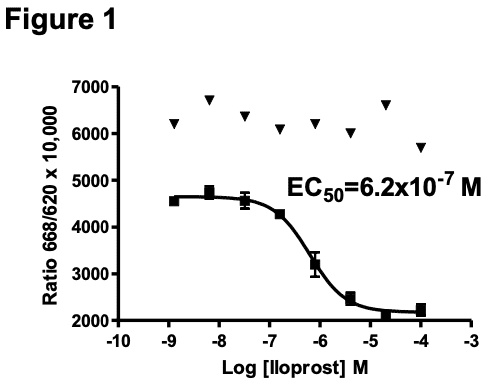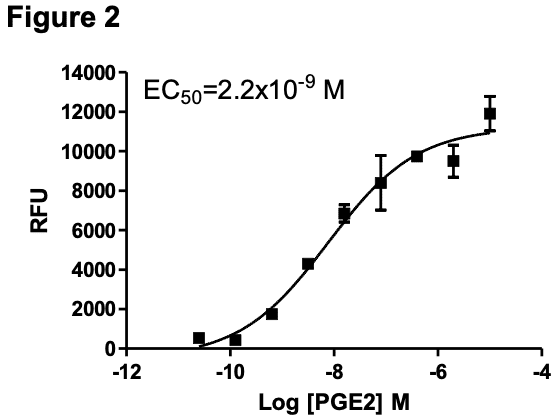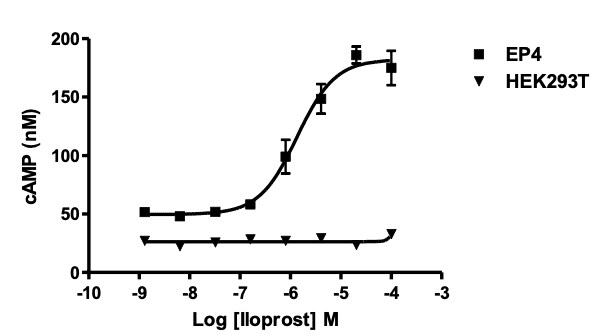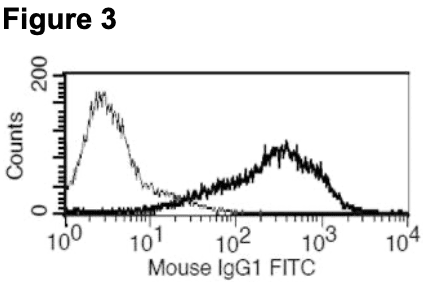Product Information
Catalog Number:
C1204
Lot Number:
C1204-012309
Quantity:
1 vial (2 x 106) frozen cells
Freeze Medium:
Sigma Freezing Medium (C-6164)
Host cell:
HEK293T
Transfection:
Expression vector containing full-length human PTGER4 cDNA (GenBank Accession Number NM_000958) with FLAG tag sequence at N-terminus
Recommended Storage:
Liquid nitrogen upon receiving
Propagation Medium: DMEM, 10% FBS, 1 μg/mL puromycin
Stability:
Stable after minimum two months continuous growth
Data Sheet
Background: The human prostaglandin E2 (PGE2) receptor EP4 (or PTGER4) is abundantly expressed. Activation of EP4 receptor induces osteoblasts and thereby stimulates de novo bone formation. Results from targeted deletion of the EP4 receptor also suggest that the EP4 subtype of the PGE2 receptor is involved in lipopolysaccharide-induced bone resorption. Modulating EP4 action may thus prove to be clinically useful for the treatment of bacterially induced bone loss, such as in periodontitis and osteomyelitis. EP4 also plays a role in the anti-inflammatory action of PGE2 in human macrophage.
Application: Functional assays




Figure 1. Dose-dependent stimulation of intracellular cAMP level upon treatment with ligand, measured with MultiscreenTM TR-FRET cAMP 1.0 No Wash Assay Kit (Multispan MSCM01). Figure 2. Dose-dependent stimulation of calcium flux upon treatment with ligand, measured with MultiscreenTM Calcium 1.0 No Wash Assay Kit (Multispan MSCA01). Figure 3. Receptor expression on cell surface measured by flow cytometry (FACS) using an anti-FLAG antibody. Thin line: parental cells; thick line: receptor-expressing cells.
References:
Morath et al. (1999) Immunolocalization of the four prostaglandin E2 receptor proteins EP1, EP2, EP3, and EP4 in human kidney. J Am Soc Nephrol 10:1851- 1860.
Zhang et al. (2000) Characterization of murine vasopressor and vasodepressor prostaglandin E(2) receptors. Hypertension 35:1129-1134.
Li X et al. (2009) Prostaglandin E(2) and its cognate EP receptors control human adult articular cartilage homeostasis and are linked to the pathophysiology of osteoarthritis. Arthritis Rheum 60:513-523.
